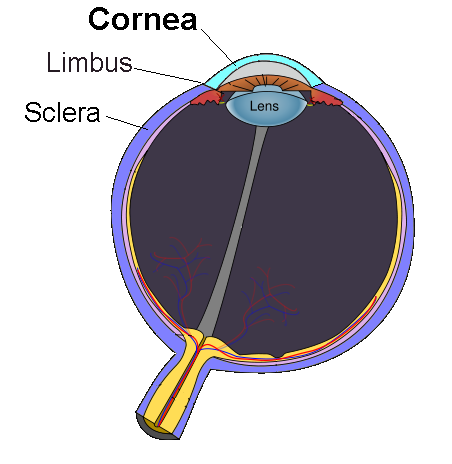Punctate epithelial erosions
Editor-In-Chief: Prab R Tumpati, MD
Obesity, Sleep & Internal medicine
Founder, WikiMD Wellnesspedia &
W8MD medical weight loss NYC and sleep center NYC
| Punctate epithelial erosions | |
|---|---|

| |
| Synonyms | N/A |
| Pronounce | N/A |
| Specialty | N/A |
| Symptoms | Eye pain, photophobia, tearing, blurred vision |
| Complications | Corneal ulcer, vision loss |
| Onset | Sudden |
| Duration | Varies |
| Types | N/A |
| Causes | Dry eye syndrome, contact lens wear, viral infection |
| Risks | Contact lens use, dry environments, autoimmune disorders |
| Diagnosis | Slit lamp examination, fluorescein staining |
| Differential diagnosis | Corneal abrasion, keratitis, conjunctivitis |
| Prevention | Proper contact lens hygiene, artificial tears |
| Treatment | Lubricating eye drops, antibiotic eye drops, anti-inflammatory medication |
| Medication | N/A |
| Prognosis | Good with treatment |
| Frequency | Common |
| Deaths | N/A |
A condition affecting the corneal epithelium
Punctate epithelial erosions (PEE) are small defects or lesions in the corneal epithelium, the outermost layer of the cornea. These erosions are often detected during an eye examination using a slit lamp and fluorescein dye, which highlights the damaged areas as bright spots. PEE can be indicative of various underlying ocular conditions and are a common finding in patients with dry eye syndrome, contact lens wearers, and those with exposure to environmental irritants.
Pathophysiology[edit | edit source]
The corneal epithelium serves as a protective barrier against environmental insults and pathogens. Punctate epithelial erosions occur when this barrier is compromised, leading to small, superficial defects. These erosions can result from mechanical trauma, such as rubbing the eyes or improper contact lens use, or from chemical exposure, such as pollutants or irritants. Additionally, PEE can be associated with systemic conditions like Sjogren's syndrome or Vitamin A deficiency.
Clinical Presentation[edit | edit source]
Patients with punctate epithelial erosions may present with symptoms such as:
- Eye discomfort or pain
- Foreign body sensation
- Photophobia (sensitivity to light)
- Tearing or watery eyes
- Blurred vision
The severity of symptoms often correlates with the extent and location of the erosions.
Diagnosis[edit | edit source]
Diagnosis of PEE is primarily clinical, based on the patient's symptoms and a thorough eye examination. The use of fluorescein dye is crucial, as it stains the areas of epithelial loss, making them visible under a cobalt blue light. The pattern and distribution of the erosions can provide clues to the underlying cause.
Management[edit | edit source]
The management of punctate epithelial erosions involves addressing the underlying cause and providing symptomatic relief. Treatment options may include:
- Lubricating eye drops or ointments to alleviate dryness and promote healing
- Discontinuation or modification of contact lens use
- Protective eyewear to shield against environmental irritants
- Topical antibiotics if there is a risk of infection
- Anti-inflammatory medications in cases of significant inflammation
In cases where PEE is secondary to a systemic condition, management of the underlying disease is essential.
Prognosis[edit | edit source]
The prognosis for patients with punctate epithelial erosions is generally good, especially with appropriate treatment. Most cases resolve with conservative management, although recurrent or persistent erosions may require further investigation and intervention.
See also[edit | edit source]
Search WikiMD
Ad.Tired of being Overweight? Try W8MD's physician weight loss program.
Semaglutide (Ozempic / Wegovy and Tirzepatide (Mounjaro / Zepbound) available.
Advertise on WikiMD
|
WikiMD's Wellness Encyclopedia |
| Let Food Be Thy Medicine Medicine Thy Food - Hippocrates |
Translate this page: - East Asian
中文,
日本,
한국어,
South Asian
हिन्दी,
தமிழ்,
తెలుగు,
Urdu,
ಕನ್ನಡ,
Southeast Asian
Indonesian,
Vietnamese,
Thai,
မြန်မာဘာသာ,
বাংলা
European
español,
Deutsch,
français,
Greek,
português do Brasil,
polski,
română,
русский,
Nederlands,
norsk,
svenska,
suomi,
Italian
Middle Eastern & African
عربى,
Turkish,
Persian,
Hebrew,
Afrikaans,
isiZulu,
Kiswahili,
Other
Bulgarian,
Hungarian,
Czech,
Swedish,
മലയാളം,
मराठी,
ਪੰਜਾਬੀ,
ગુજરાતી,
Portuguese,
Ukrainian
Medical Disclaimer: WikiMD is not a substitute for professional medical advice. The information on WikiMD is provided as an information resource only, may be incorrect, outdated or misleading, and is not to be used or relied on for any diagnostic or treatment purposes. Please consult your health care provider before making any healthcare decisions or for guidance about a specific medical condition. WikiMD expressly disclaims responsibility, and shall have no liability, for any damages, loss, injury, or liability whatsoever suffered as a result of your reliance on the information contained in this site. By visiting this site you agree to the foregoing terms and conditions, which may from time to time be changed or supplemented by WikiMD. If you do not agree to the foregoing terms and conditions, you should not enter or use this site. See full disclaimer.
Credits:Most images are courtesy of Wikimedia commons, and templates, categories Wikipedia, licensed under CC BY SA or similar.
Contributors: Prab R. Tumpati, MD

